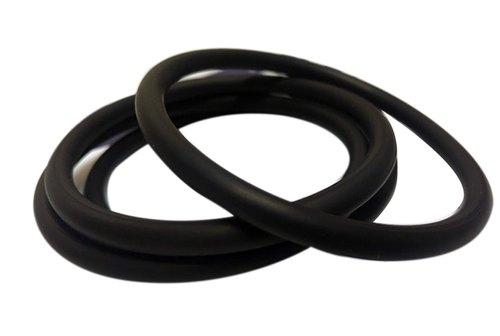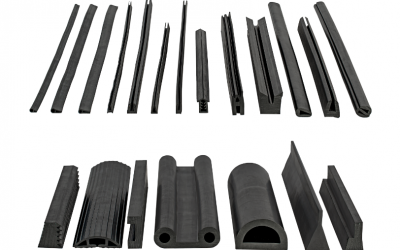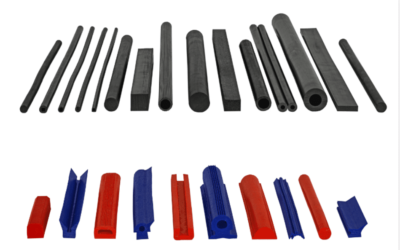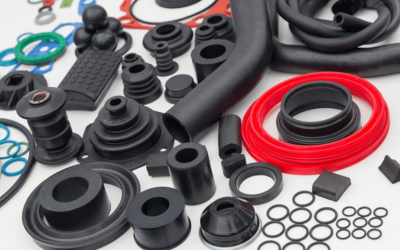Synthetic rubber is an artificial man-made elastomer that is used in a vast range of domestic as well as industrial applications. There are different types of Synthetic rubbers, each with its different properties.
EPDM Rubber and Nitrile Rubber are two such common synthetic rubber compounds that are used extensively.
While both EPDM and Nitrile rubbers offer a considerable amount of elasticity and durability, they differ in their properties, resistance to certain environmental conditions or mediums, and have their applications.
This article will help you understand what EPDM and Nitrile rubbers are and how they differ from each other. With this information, you will be able to make an informed choice during your selection process.
What is EPDM Rubber?
EPDM Rubber, or Ethylene Propylene Diene Monomer Rubber, was developed in the 1960s.
As rubber as a raw material became widespread in use, manufacturers began to realize that there was a need for synthetic UV-resistant rubber that could withstand exposure to outdoor environments for an extended period without facing degradation like natural rubber. The answer to this was EPDM Rubber.
EPDM is made up of ethylene, propylene, and diene comonomers, and have a saturated polyethylene backbone to their structure, which provides them with a high resistance capability to heat, light, and ozone, as compared to other rubber materials.
This property of endurance outdoor weathering exposure is what sets EPDM Rubbers apart from other rubbers and has earned it industry-wide appeal and acceptance.
Properties of EPDM Rubber
EPDM offers considerable resistance to abrasion, heat, steam, light, UV rays, water, and ozone, giving it a weatherproof quality and high durability, which makes it an excellent choice for outdoor applications.
It is also resilient and flexible, possessing low electrical conductivity, high noise insulation, a maximum elongation of 600%, and a tensile range of 500-2500 P.S.I.
It can function at temperatures as low as -51⁰C and as high as 150°C without air. It is also compatible with mild acids, alcohols, ketones, silicone oils, greases, hot and cold water, detergents, alkalis, fireproof hydraulic fluids, etc.
On the other hand, EPDM is incompatible with most hydrocarbons, such as kerosene, oils, gasoline, halogenated solvents, and some lubricants.
The durability, flexibility, and long life in extreme environments are what make EPDM rubbers a widely-used synthetic material in the industry.
Primary Uses Of EPDM Rubber
EPDM rubbers can be produced in many forms, such as EPDM sheet rubbers as well as adhesives.
Some common applications of the EPDM rubber include :
- Seals and Sealants.
- Gaskets.
- O-Rings.
- Tubing.
- Washers.
- Cooling Systems.
- Brake Systems.
- Ozone Exposure Applications.
- Roofing.
- Waterproof Coating.
- Custom Moulded Rubber Components.
What is Nitrile Rubber?
Nitrile Rubber, also known as NBR (Nitrile Butadiene Rubber) or Buna-N, was first developed in the 1930s.
During WW1, rubber was high in demand. The price of natural rubber skyrocketed after the war due to shortages. That sparked a renewed interest in the development of synthetic rubber, paving the way for Nitrile / Buna-N.
Nitrile is composed of acrylonitrile and butadiene monomers. It is highly resistant to oil, gas, diesel fuel, chemicals, and petroleum products.
Today, it is one of the widely used synthetic rubbers, especially in the sealant industry. A huge benefit of Nitrile Rubberis that it is cost-efficient and provides flexibility in applications.
Properties of Nitrile Rubber
One of the most significant advantages that Nitrile offers is its imperviousness to mineral oils, vegetable oils, benzene and petrol, petroleum-based products, diesel fuels, gas, chemicals, diluted acids, and alkaline.
The amount of oil resistance is influenced by the percentage of acrylonitrile in the rubber. The higher the acrylonitrile content, the better the resistance as well as strength and permeability. Lower acrylonitrile means less resistance but more flexibility at lower temperatures.
Nitrile can operate at temperatures ranging from -40°C to 108°C and is also abrasion, tear, and compression set resistant.
It offers three times more puncture resistance than natural rubber and possesses a 600% elongation rate and a 500-2500 P.S.I. tensile range. Nitrile, however, also has drawbacks, with poor resistance to UV rays, ozone, weathering, and extended outdoor exposure.
Primary Uses of Nitrile Rubber
Some common applications of Nitrile rubber include:
- Sealants.
- Molded Goods.
- Gasket.
- Hydraulic Hoses.
- Conveyor Belting.
- Washers.
- O-Rings.
- Fuel Systems.
- Protective Equipment (like Gloves).
- Oil Resistant Applications.
It is also ideal for automotive, aeronautical, nuclear, as well as kitchen applications.
EPDM vs Nitrile Rubber – Which is Better?
Both EPDM Rubber and Nitrile Rubber have their advantages and disadvantages.
However, they’re also quite similar in some of their properties. Before we look at their differences, let’s take a look at their similarities.
EPDM and Nitrile rubbers are synthetic elastomers that are both highly durable and flexible. They are similar in their elongation percentage, tensile strength, and impervious abrasion, and compression set. The two are also commonly used for O-rings, gaskets, and other industrial applications.
After understanding how they are similar, let’s go through their core differences.
EPDM’s temperature resistance range is from -51°C to 150°C, while for Nitrile, it is -40°C to 108°C. While both work well in extreme temperatures, EPDM has a slight edge over Nitrile.
EPDM Rubber is great at providing resistance against UV Rays, Ozone, Sunlight, and Weathering Conditions, and can hold well in outdoor environments without facing degrading.
Nitrile has extremely low resistance against UV Rays, Ozone, and weathering effects, and performs poorly in outdoor environments.
On the contrary, Nitrile Rubber provides great resistance to gasoline, diesel fuel, motor oil, non-polar solvents, and petroleum-based products, as compared to EPDM, which is poorly resistant to them. Due to this, while EPDM is used frequently in braking systems in vehicles, Nitrile finds better use in the fuel systems.
Another difference between EPDM and Nitrile is that EPDM is an aromatic polymer but Nitrile, on the other hand, is non-aromatic. And when it comes to cost, Nitrile is the more expensive one out of the two.
Making the Right Choice – EPDM vs Nitrile Rubber.
When you choose between EPDM Rubber and Nitrile Rubber, you need to consider its application and the environment during the decision-making process.
If you want a rubber product that performs well in outdoor environments when exposed to ozone, sunlight, and UV rays, then EPDM Rubber is your best bet.
However, when such exposures are not a concern and fuels are involved, then Nitrile is a more suitable option.
Now that you know the basics of EPDM and Nitrile Rubber, their properties, their applications, and their differences, we hope that you will be able to utilize them to your advantage.
If you need any rubber products, you can rely on R-Tech Rubber Industries. They provide a wide variety of Rubber products in India.
Sponge Rubber vs Solid Rubber: What’s the difference?
Home Blogs Sponge Rubber vs Solid Rubbre: What's the difference?One of the most commonly asked questions is what is the difference...
Application and Benefits of Molded Rubber Products
Home Blogs Application and Benifits of Molded Rubber ProductsThe inescapability of rubber around us as different parts, materials,...
7 Benefits of using silicone rubber for window and door seals
Home Blogs 7 Benefits of using silicone rubber for window and door sealsA silicone rubber sheet is an elastomer made up of silicone-...
Locations
R Tech Rubber Industries : Rubber Products Manufacturers
📍- Raju Industrial Estate, 16 / A, near Western Express Highway, opp. Imperial Heights Building, Penkarpada, Mira Road East, Mumbai, Mira Bhayandar, Maharashtra 401107
📞- 09820030660
R-Tech Rubber Industries © 2021 All rights reserved





